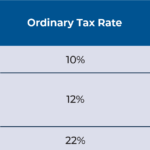Trusts have been used in estate planning for decades as a way for individuals to ensure that their assets are distributed according to their wishes after death. Not only do trusts give owners more flexibility to specify how their assets are distributed upon their death (relative to a simple Will, for example), but strategies using trusts can also reduce the potential income, gift, and estate taxes associated with those assets (thereby allowing heirs to benefit more from the assets left to them). And while numerous trust strategies exist for individuals, many of the most popular strategies have historically revolved around the use of Grantor Trusts.
However, the recently proposed “Build Back Better” reconciliation bill currently under debate in Congress has targeted the use of Grantor Trusts, particularly because of how they are used by wealthy individuals to transfer assets – free of estate taxes! – to their heirs. The bill’s text, released by the House Ways and Means Committee on September 13, 2021, proposes major changes to how assets in Grantor Trusts are treated for gift and estate tax purposes, such as making all Grantor Trust assets includable in the Grantor’s estate, treating transfers between a Grantor and their trust as a gift or sale rather than a disregarded transaction, and treating transfers from the trust to anyone other than the Grantor during their lifetime as a gift. As a result, Grantor Trusts that are frequently used in many estate planning strategies – including Grantor Retained Annuity Trusts (GRATs), Intentionally Defective Grantor Trusts (IDGTs), and Spousal Lifetime Access Trusts (SLATs) – could be seriously impacted or eliminated altogether!
Importantly, for individuals and families who can benefit from these strategies, the proposed bill would only apply to new trusts created after its enactment. Which means that there is still a (very limited!) window of opportunity between now and the bill’s enactment (which can happen anytime in the coming weeks or months) to implement Grantor Trust strategies. Additionally, the Build Back Better legislation would also reduce the taxable estate exemption by 50% (to $5.85 million for individuals, and $11.7 million for couples), meaning that strategies such as Grantor Trusts that currently remove assets from one’s taxable estates could be newly relevant for individuals and families whose assets fall between the old exemption amount and the new, lower one… but because of the proposed changes to Grantor Trust laws, those who can benefit from such strategies only have between now and the date of the bill’s enactment to decide on a strategy and to create and fund a trust!
Ultimately, while the proposed bill would not impact Grantor Trusts already in place, it would place significant limitations on implementing new strategies and leave existing ones with less flexibility to change course. And even though the bill has several steps to take before becoming law, the potential significance of its impact combined with the limited amount of time before its provisions take effect means that the time to plan (and act on!) any Grantor Trust strategy is now… because letting more time elapse between now and the bill’s passage risks running out of time and needing to start from scratch with fewer options!





 Welcome back to the 249th episode of the Financial Advisor Success Podcast!
Welcome back to the 249th episode of the Financial Advisor Success Podcast!





